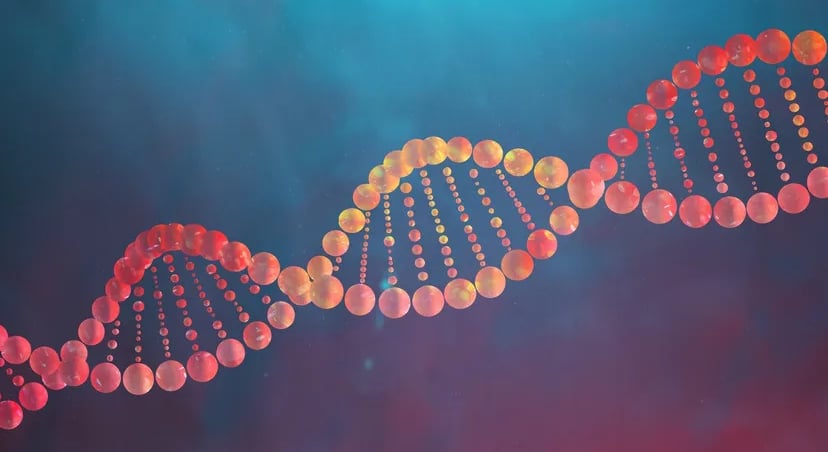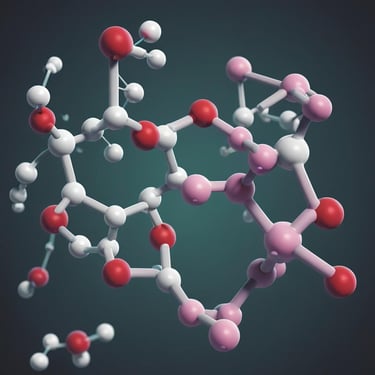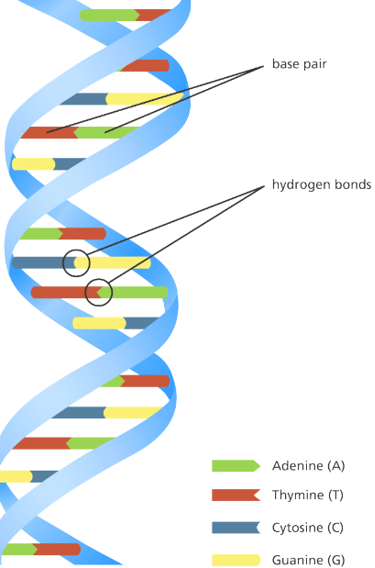3.2 billion what?
The start of a journey
4/8/20243 min read


For the last 20 years or so I've been studying (amongst other things) DNA, or to give it it's full name, deoxyribonucleic acid - more on that later. You might be familiar with DNA from Jurassic Park or CSI, the music of Little Mix, or in many other contexts, but do you know what it is? Or what it does?
Well, a simple internet search will probably find many descriptions of DNA from various sources. Some will assume a certain level of biological knowledge of the reader, neglecting to explain certain concepts that might be important for understanding. Others might be so dry as to cause eyes to droop after the first couple of sentences. What I want to try to do here is to convey complicated scientific concepts, assuming minimal prior knowledge, in a way that's both entertaining and informative. A tall order - perhaps, but here goes...


You could think of DNA as like a ladder, albeit a very twisted ladder, with the sides containing lots of carbon, phosphorous and oxygen atoms, and the rungs made of molecules called nitrogenous bases, held together by really strong (hydrogen) bonds. The bases contain a lot of nitrogen atoms, hence the nitrogenous bit. The structure of DNA, characterised by the famous 'double helix' (twisty ladder), was discovered way back in the 1950s but perhaps the most crucial part of the structure is the base pair. You see, the rungs of the ladder don't just hold the whole thing together, they are the reason the ladder exists at all. The bases are commonly represented by individual letters (the first letter of their names), Adenine, Guanine, Cytosine and Thymine. The amazing thing is that combinations of these four bases form the basic instructions for the development of the vast majority of life on planet Earth (from humans to bacteria) - just think about that for a minute. One complete copy of the DNA from each individual is called a genome and the size of that genome is measured in pairs of bases (base-pairs).
It might be helpful to start small, very small! Atoms are the basic building blocks of the universe. Sure, recent experiments in Switzerland have found lots of sub-atomic particles, but for the purposes of what I want to talk about here, atoms are small enough. If you put a bunch of different atoms together (with some chemical bonds to hold them in place) you have a molecule. DNA is a molecule, but actually it's more like a long string of small molecules that together make a much bigger molecule.


The genomes of humans contains roughly 3.2 billion base-pairs! That's 3,200,000,000. Somewhere between 99.5% and 99.9% (depending on which study you read) of your genome is the same as every other human on the planet, so the bit that makes you different is at most 0.5%, but that's still a few million base-pairs.
There is so much more I could say on the topic. I want to tell you more of what we know (and what we don't know) about the human genome, how it is used in our cells to generate all the 'machinery' that cells need to carry out their various functions, and what happens when things go a bit Pete Tong (my inner cockney coming out there). But first I want to talk about some more big numbers (it'll be cool, I promise!).
